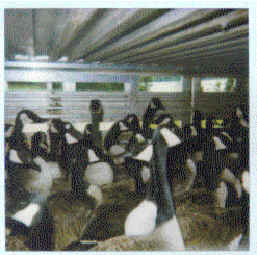DRYDEN, ONTARIO - JUNE, 1998
In a letter dated March 3, 1997, to Ducks Unlimited Canada, the Grassy Narrows Resource Committee sought help to address the environmental degradation brought on by logging activities on their traditional use land.
"The other challenges we’re facing are the logging industries. They manufacture culverts and bridges across the streams and rivers which cause water and river fluctuations. Particularly, we are very alarmed they are building a road to this lake, a marsh lake called ‘Duck Lake’, which is famous for its waterfowl habitat area and wild rice growth. Without certain measures taken, the natural reproduction of this area may be destroyed forever".
As a result of this and other letters to the Ministry of Natural Resources and the Canadian Wildlife Service, addressing their concerns and requesting a solution to the decline in waterfowl populations in the area due to the use of clear cutting and pesticides by the large paper companies, wildlife officials seized the opportunity to relocate "problem geese" from the City of Mississauga, Ontario, to the Grassy Narrows area.
 Geese being transported |
Geese are let out on the road |
The Canadian Wildlife Service dropped the geese off in an area adjacent to Grassy Narrows First Nation, close to the community of Canyon Lake. When the people in the nearby towns started to complain, officials portrayed the Indians in a negative light by disseminating erroneous information to the media saying that the geese were brought to the reservation to be slaughtered for food and used for ceremonial purposes.
The fact is, the Indians just wanted to help maintain an existing population of geese by protecting their habitat. They never requested additional geese for food or ceremony. It can only be assumed that, based on a request for help, the Canadian Wildlife Service took it to mean the Indians needed more geese and decided to take advantage of the situation by dropping off unwanted geese from cities that did not want them in their parks.
On December 28, 1998, when Abitibi-Consolidated, Inc. was scheduled to submit its clearcutting plans to the Ministry of Natural Resources, the people of Grassy Narrows First Nation staged a protest against the mill and further environmental damage.
If you want to help, you can fax Grassy Narrows First Nation at 807-925-2649, or contact the Ministry of Natural Resources, Kenora, Canada.
email: thorntb3@epo.gov.on.ca
Also, please sign our petition protesting Abitibi's plan.
Be sure to see the article and pictures taken during EnviroWatch’s visit to Grassy
Narrows: ![]()